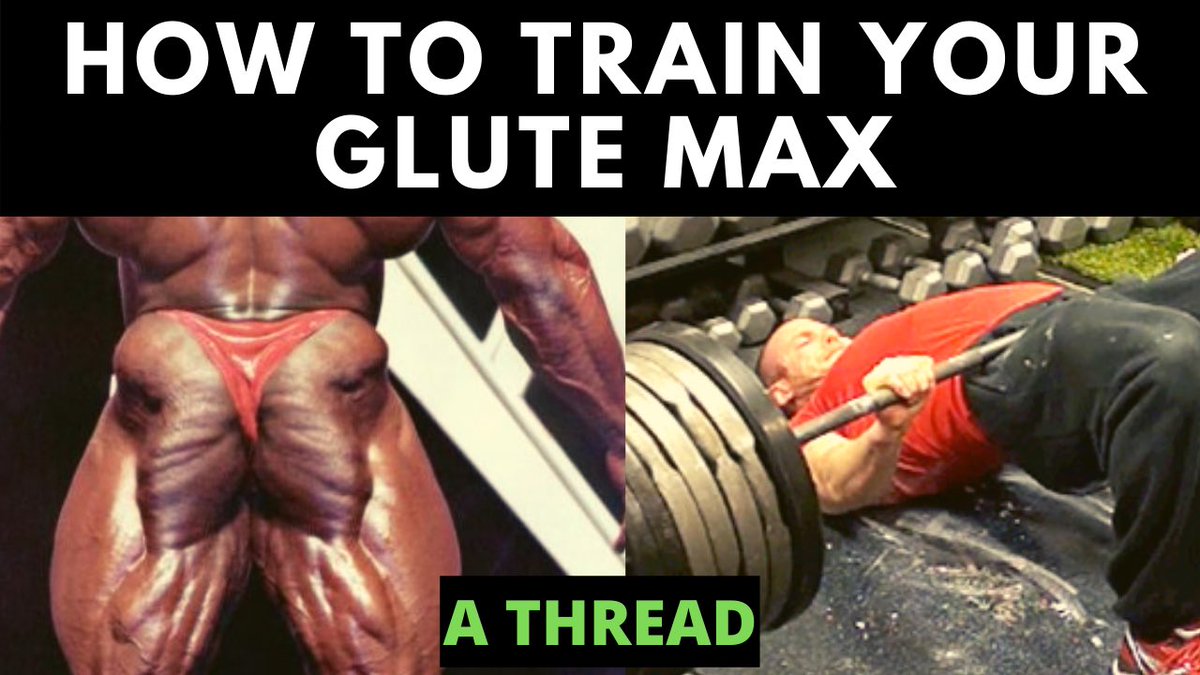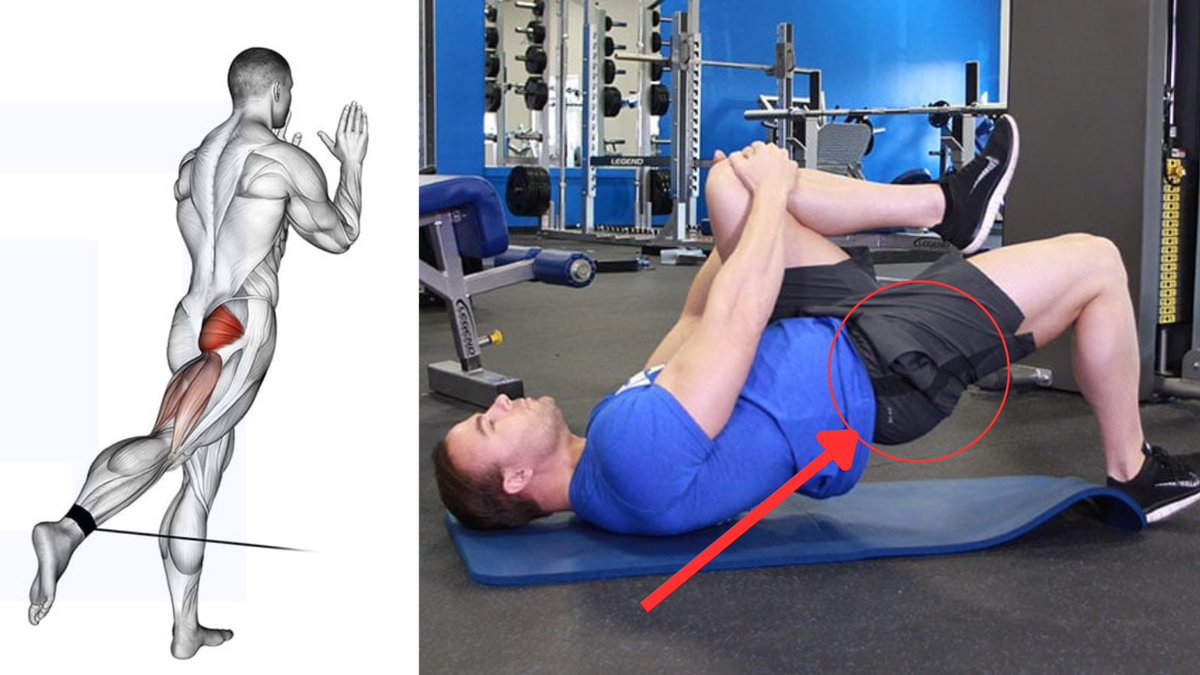A thread on how to train the Glute Max
You often hear terms like “gluteal amnesia” or “my glutes are asleep”
Nah, your positioning and exercise selection probably sucks.
Let’s dig in on how to attack the glutes.
We first should appreciate it’s mechanics to best...
You often hear terms like “gluteal amnesia” or “my glutes are asleep”
Nah, your positioning and exercise selection probably sucks.
Let’s dig in on how to attack the glutes.
We first should appreciate it’s mechanics to best...

train it.
It has a significant role in:
- External Rotation at the hip and femur (leg bone)
- Hip & Trunk extension
- Hip abduction
- Posterior pelvic tilt
And yet, it is hardly active at all during standing and walking (Neumann, 2010). Interesting, huh?
It has a significant role in:
- External Rotation at the hip and femur (leg bone)
- Hip & Trunk extension
- Hip abduction
- Posterior pelvic tilt
And yet, it is hardly active at all during standing and walking (Neumann, 2010). Interesting, huh?

In order for a muscle to be properly contracted, it needs to be stretched. That is what cues contraction of muscles in the human body.
That’s partially why it doesn’t function much in walking and standing, while it does much more in running.
That’s partially why it doesn’t function much in walking and standing, while it does much more in running.

So placing a band around the knees and shoving them way outside your feet is not the optimal.
That’s a great way to keep the glutes contracted the whole time and leads to sub-optimal recruitment.
That’s a great way to keep the glutes contracted the whole time and leads to sub-optimal recruitment.

HIP EXTENSION TRAINING
The glutes are primarily hip extensors. They display increasing internal moment arms (peak contraction) as they get closer to full hip extension.
Interestingly, they are also heavily active in over-extension of the hips (Beardsley, 2019).
The glutes are primarily hip extensors. They display increasing internal moment arms (peak contraction) as they get closer to full hip extension.
Interestingly, they are also heavily active in over-extension of the hips (Beardsley, 2019).

Therefore, hip thrusts should lead to the greatest glute max recruitment in hip extension.
I would encourage you not to overextend the lumbar spine here (arching the low back). That’s the #1 error I see on these.
I would encourage you not to overextend the lumbar spine here (arching the low back). That’s the #1 error I see on these.

Keep a slight posterior pelvic tilt to help fire up those glutes.
You won’t be able to get your hips up as high without cheating, and that’s okay.
Work through the range of motion you have available to you as opposed to chasing compensatory mobility.
You won’t be able to get your hips up as high without cheating, and that’s okay.
Work through the range of motion you have available to you as opposed to chasing compensatory mobility.

HIP EXTERNAL ROTATION
Due to the principle of stretch-to-contract as I mentioned earlier, exercises that take the hip from internal rotation to peak external rotation are going to be great here.
Due to the principle of stretch-to-contract as I mentioned earlier, exercises that take the hip from internal rotation to peak external rotation are going to be great here.
This single leg deadlift variation gets the job done. Turn your hips in on the way down and finish in full hip extension. The hip actually goes through high degrees of external rotation as it approaches full hip extension.
This is killer. I got this one from Kyle Dobbs.
This is killer. I got this one from Kyle Dobbs.
HIP ABDUCTION
This is a tough one because the glute max isn’t a great hip abductor.
I would argue we would be best incorporating it with other muscles such as the posterior gluteus medius which is a primary abductor.
We might think of clamshells here, but honestly traditional
This is a tough one because the glute max isn’t a great hip abductor.
I would argue we would be best incorporating it with other muscles such as the posterior gluteus medius which is a primary abductor.
We might think of clamshells here, but honestly traditional
clamshells are often butchered heavily.
I like this (PRI exercise) instead which has much more intent behind it as well as a posterior glute med component too.
Try this before your glute training or leg day and see what happens:
I like this (PRI exercise) instead which has much more intent behind it as well as a posterior glute med component too.
Try this before your glute training or leg day and see what happens:
Overall, the glutes will not be maximized via one exercise.
Because they have a lot of attachments & roles in the body, we need multiple different exercises in multiple different planes.
Because they have a lot of attachments & roles in the body, we need multiple different exercises in multiple different planes.
A note on this: keeping the knees in line with the toes with a band can have benefit in the right context. The above is an example of too far
• • •
Missing some Tweet in this thread? You can try to
force a refresh















